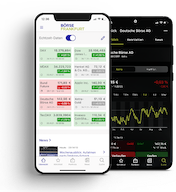Foreign stocks: Direct access to Slovenian and Romanian securities

Buying French, Italian, US, or Australian stocks in this country is not an issue anyway. For stocks from Slovenia or Romania, it used to be much more complicated. That has now changed.
5 June 2025. FRANKFURT (Börse Frankfurt). Anyone who wanted to buy Slovenian or Romanian shares in Germany before March this year did not have an easy time of it. Access and trading were either impossible or only possible to a limited extent. That has changed in the last three months or so. “Liquidity is high, and market capitalization is in some cases in the billions of euros,” explains Marc Richter of Steubing AG, which specializes in these shares on the Frankfurt Stock Exchange. Almost all sectors are covered. “Both countries are showing above-average economic growth in the EU,” Richter notes. “In addition, both the Slovenian and Romanian stock markets have performed well recently.” The stocks also offer attractive dividend yields in some cases.
Slovenian stocks: From pharmaceuticals to telecommunications to insurance companies
Bordering Austria and Italy, Slovenia is a small Central European country with a population of 2 million. Slovenia has been a member of the EU since 2004 and adopted the euro in 2007. With a per capita GDP of €34,400, Slovenia is below the EU average of €37,600. However, according to the International Monetary Fund (IMF) classification, the country is one of the developed countries of Europe (“Advanced Europe”). After 1.6 percent growth in 2024, the IMF expects 1.8 and 2.4 percent for 2025 and 2026. This means that Slovenia will outperform the “Advanced Europe” group, which averages only around 1 percent per year.
With eight stocks, all securities in the Slovenian stock index SBITOP are now tradable, as Richter explains. There are no currency risks associated with an investment due to the country's membership in the eurozone. Newcomers include the telecommunications company Telekom Slovenije (SI0031104290), the chemical company Cinkarna Celja (SI0031103805), the oil company Petrol (SI0031102153), the pharmaceutical company Krka (SI0031102120), port and logistics service provider Luka Koper (SI0031101346), as well as the bank Nova Ljubljanska (SI0021117344), the insurer Zavarovalnica (SI0021111651) and the reinsurer Pozavarovalnica (SI0021110513). Krka is the heavyweight in terms of market capitalization, with €6 billion. “The company is one of the world's largest generic drug suppliers,” Richter notes.

Only one ETF on offer.
Those who want to invest in Slovenian or Romanian stocks via ETFs do not have much choice. There is only one ETF that tracks each country. For Slovenia, this is the Expat Slovenia SBI TOP (BGSLOBI02187), which tracks the Blue Chip Index of the Ljubljana Stock Exchange SBI TOP. Over a one-year period, the ETF has gained 48 percent, and over a three-year period, it has gained a cumulative 95 percent. The Expat Romania BET (BGROBET05176) tracks the Romanian BET stock index. Here, the one-year return is a more modest 6 percent, but the cumulative return over three years is 45 percent. Both ETFs were already listed on Xetra in 2018 by the issuer Expat Asset Management, together with other ETFs on Eastern European countries.
Romania: Many oil and energy companies
Located in southeastern Europe, Romania is one of the larger countries in Europe with a population of 19 million. Romania has been a member of the EU since 2007, but still has its own currency, the leu. The euro is to be introduced as soon as the requirements are met. Romania's per capita GDP of €30,000 is once again significantly below the EU average of €37,600. The country is also classified by the IMF as one of Europe's emerging and developing countries (“Emerging and Developing Europe”). After 0.9 percent GDP growth in 2024, the Monetary Fund expects growth of 1.6 and 2.8 percent in 2025 and 2026.

“More Romanian stocks are to be added"
The Romanian stocks also cover a broad range of sectors. These include the oil and gas companies Romgaz (ROSNGNACNOR3), OMV Petrom (ROSNPPACNOR9), which belongs to Austria's OMV Group, and Transgaz (ROTGNTACNOR8), as well as the nuclear energy company SN Nuclearelectrica (ROSNNEACNOR8) and the energy supplier SPEEH Hidrocentrale (RO4Q0Z5RO1B6).
However, companies from other sectors are also represented, specifically the healthcare group Med Life (ROMEDLACNOR6), the telecommunications group Digi Communication (NL0012294474), and Banca Transilvania (ROTLVAACNOR1). The heavyweights here are Hidrolectricia, with a market capitalization of €12.5 billion, and OMV Petrom, with €10 billion. “In the future, trading in Romanian stocks will be expanded,” explains Richter.
By Anna-Maria Borse, 5 June 2025, © Deutsche Börse
About the Author
Anna-Maria Borse is a financial and business editor specializing in financial markets/stock exchanges and economic issues.
Feedback and questions to redaktion@deutsche-boerse.com





